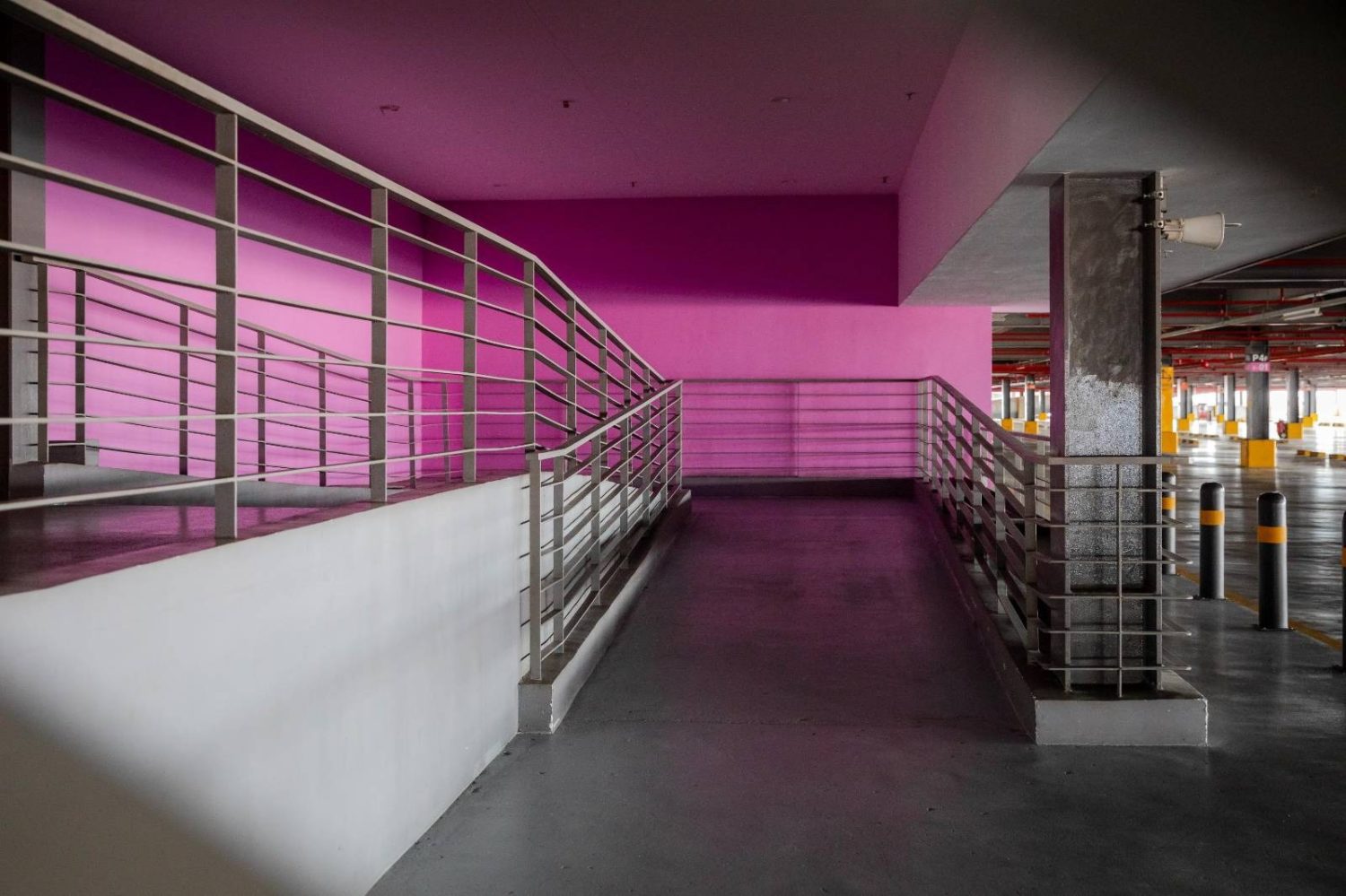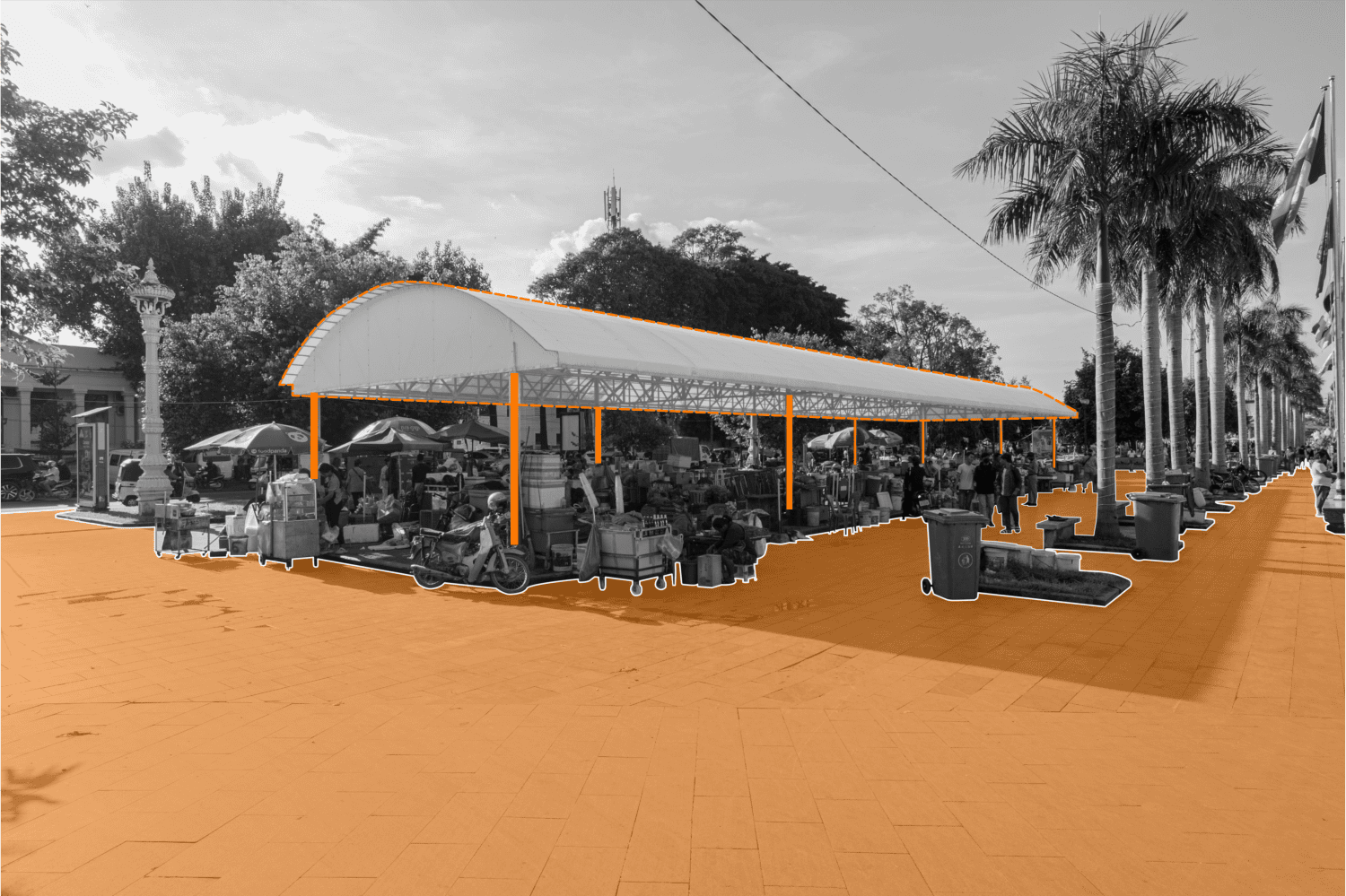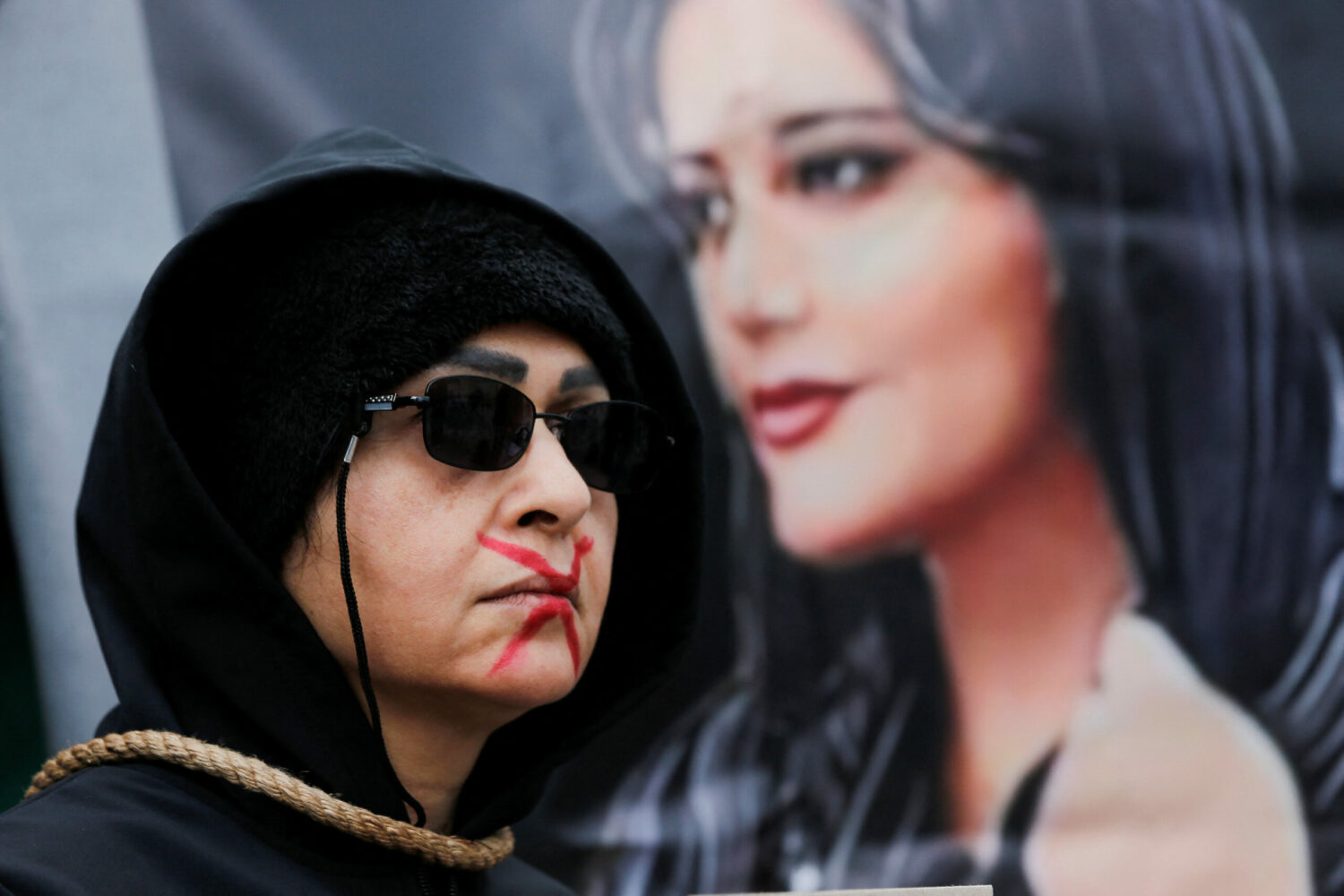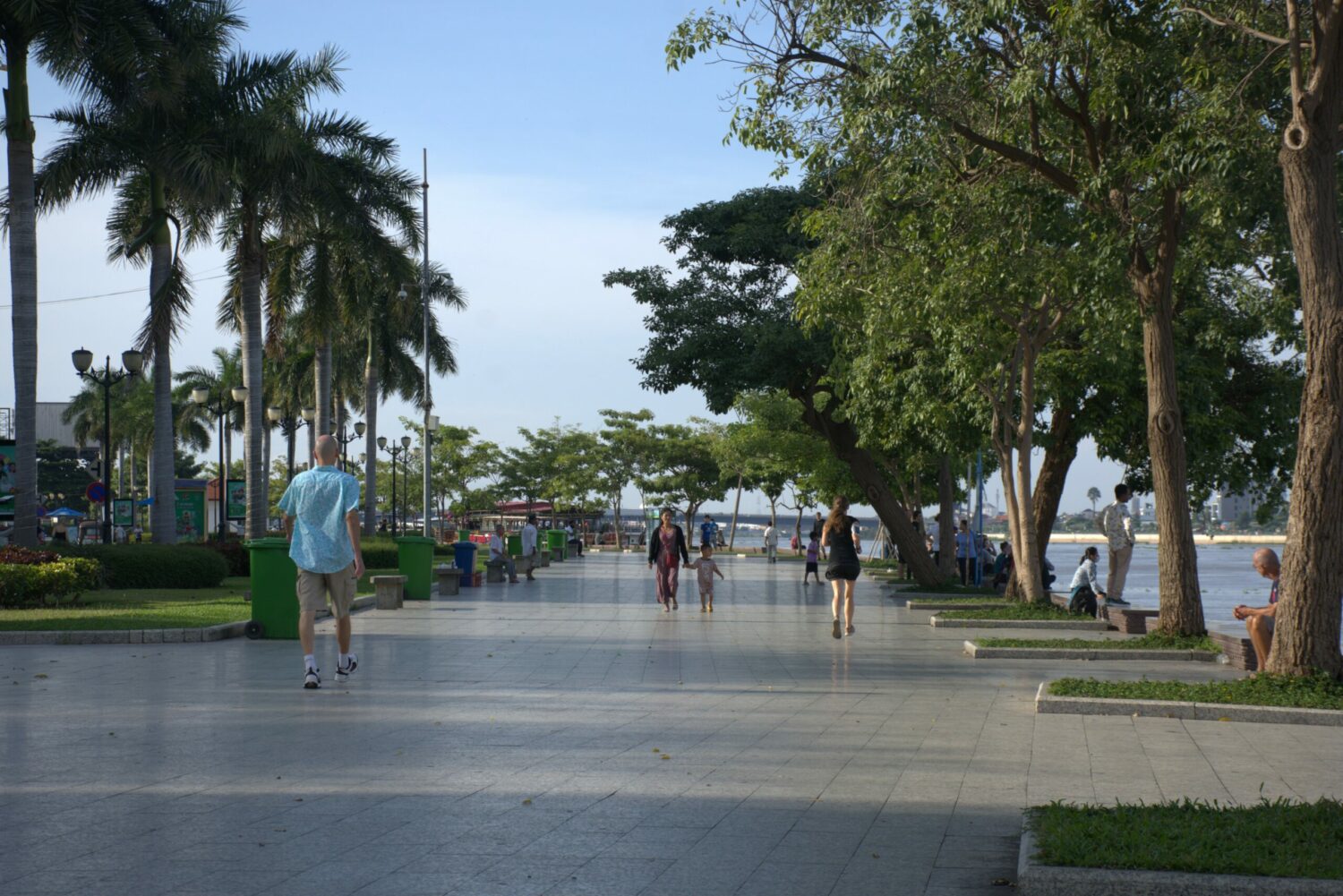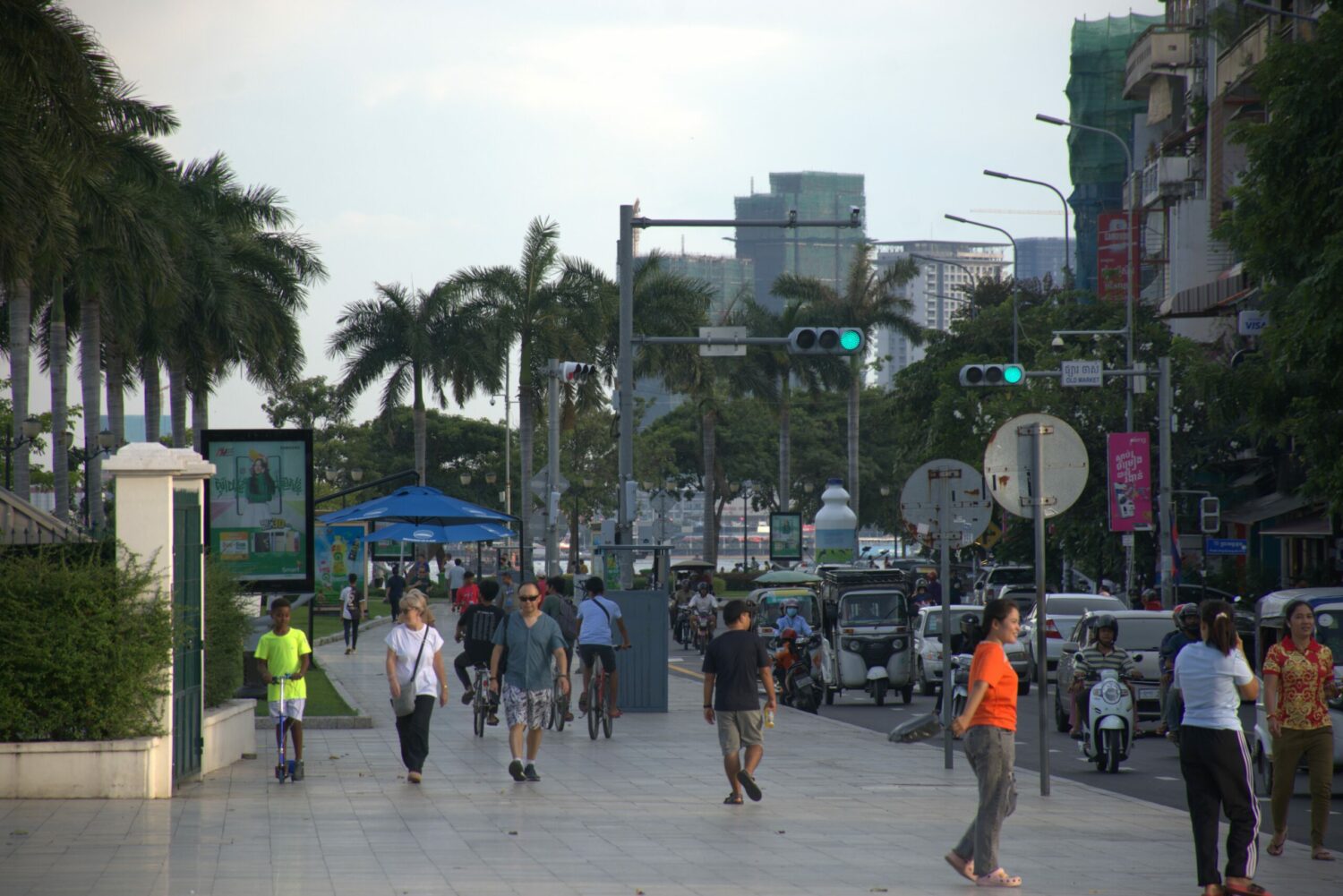The built environment in Cambodia is often a hostile environment for people with disabilities. Put yourself in the position of a wheelchair user, for example. To even get into a building you must be lifted over raised landings and several steps. Once inside, your situation does not improve as there is no restroom stall that is wheelchair accessible, while interior stairwells and the absence of elevators further limits your mobility.
 Ses Aronsakda is a junior researcher at Future Forum. Educated as an architect, he conducts research on Phnom Penh’s urban planning with interests in all aspects of cities and urban design.
Ses Aronsakda is a junior researcher at Future Forum. Educated as an architect, he conducts research on Phnom Penh’s urban planning with interests in all aspects of cities and urban design.
Pay close attention to the spaces you move through — in your home, your workplace, your school, your neighborhood market — and you will notice that features like steep ledges, uneven surfaces and numerous other hazards are bountiful. These design elements form an obstacle course that is difficult, or even impossible, to navigate for those with mobility, visual, hearing or cognitive impairments.
And to be forced to rely on the assistance of others in everyday situations, while out in public, makes it impossible for those with disabilities to be fully included into society and be functional members of it. A built environment which unintentionally excludes a group of individuals, through design — or the lack of it — reflects the larger apathy Cambodian society all too often displays toward people with disability.
This apathy is perhaps partially explained by the fact that most people think that this problem will never affect them. But evidence suggests that everyone may have to rely on accessibility provisions at some point in their lives. Whether it is due to mobility, cognition, hearing or vision impairment, half of all individuals will temporarily suffer from one type of disability for at least three months before the age of 65. And the odds of a permanent disability only increase the older one gets, affecting 1 in every 4 people over their lifetime.
Thus, designing and building spaces with disabilities in mind ends up benefiting almost everyone, be it temporarily or permanently. But more importantly, the creation of a truly inclusive society for people with disabilities, which allows them to be full and productive members of society, hinges on three factors.
Firstly, designers’ and builders’ awareness and consideration toward the needs of disability users. Secondly, a well formulated and coherent disability design standard. Lastly, the codification into practice the prioritization and assessment of accessibility features throughout the design process.
The Current Law Provides Only a Basic Framework
According to the 2014 Cambodia Demographic Health Survey, 1 in 10 Cambodians experiences at least some degree of difficulty in performing basic tasks, while 2.1% are severely affected by disabilities. More recent admissions by Minister of Public Works and Transport Sun Chanthol indicates the number of citizens with serious disabilities is closer to 1 million Cambodians.
Given the scale at which disabilities impact citizens, it is unfathomable that Cambodia lacks a robust design standard to accommodate individuals with disabilities. As I prepared to write this piece, I spoke to a few Cambodian architects to try to get a sense for how the local design community views the current state of disability-accessible building. I spoke with two architecture practitioners, one based in Siem Reap and one based in Phnom Penh.
“The primary issue is that users with disabilities are almost invisible to most designers, developers and builders,” the Phnom Penh-based architect told me. “And when we eventually think about them it is usually too late to implement the features they need,” he added.
As a practicing designer myself, I observe that this fact is only exacerbated by a disability law which only provides the most basic guideline.
Currently, only the 2009 “Law On The Protection And Promotion Of Rights Of Persons With Disabilities” provides broad guidelines on this subject, but lacks the minute details which are necessary for practical implementation by designers and builders.
In this law, Articles 21-26 briefly describe how publicly accessible spaces must have ramps for wheelchair users, and accessible bathrooms must be available. Some details are clearly missing. The law does not specify, for example, the appropriate degree, length or width for the slope of a wheelchair ramp, nor does it suggest how many accessible bathrooms should be available relative to a building’s size.
Hence, despite being a law it is treated more as a suggestion.
This leads to difficulty for designers and builders who don’t have the necessary information to make their projects inclusive for all Cambodians. And for Cambodians with disabilities, the resulting spaces make the prospect of going anywhere alone extremely difficult or even completely out of the question.
Yet given the scale and likelihood of a temporary or permanent disabling condition happening to everyone, improving accessibility in all spaces is indispensable.
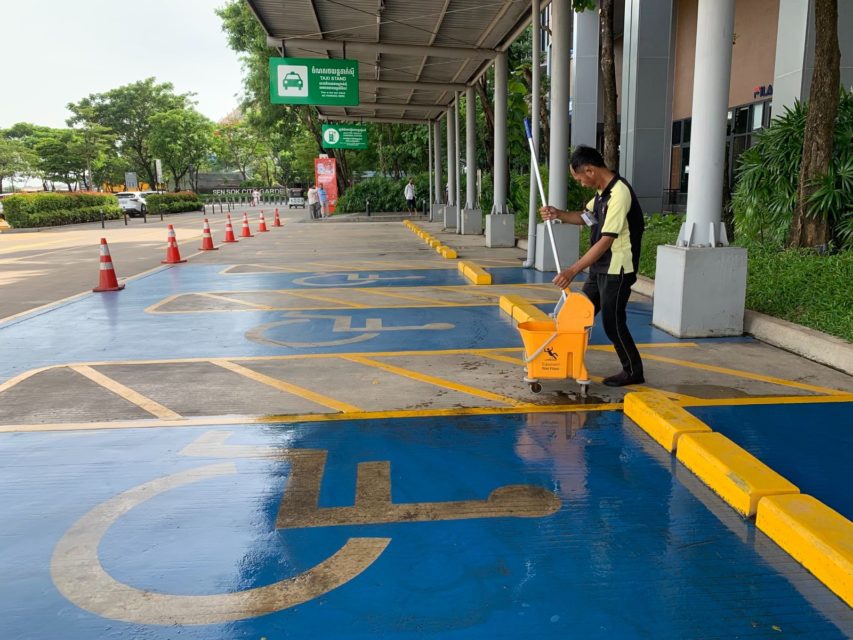
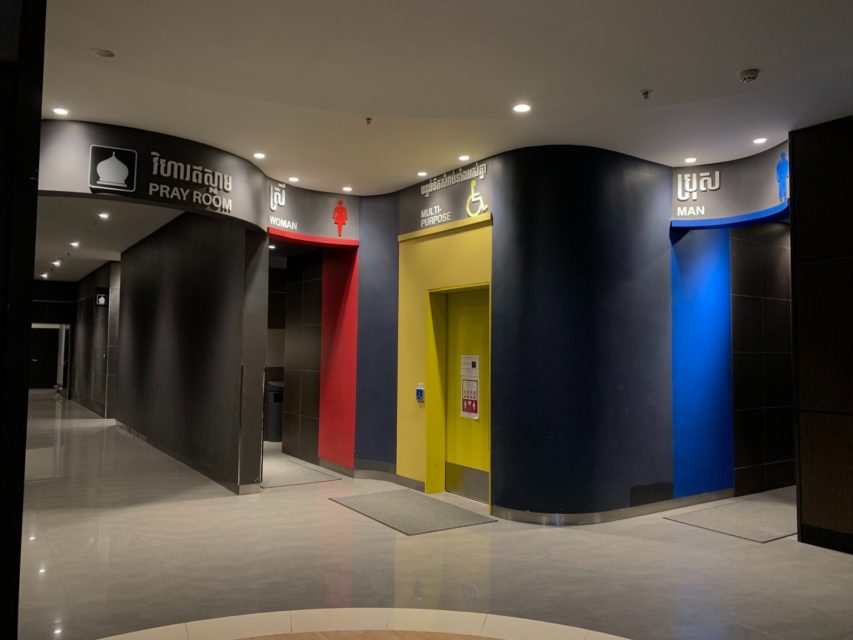
A New Design Standard
Creating an accessibility standard for Cambodia isn’t a straightforward task. We cannot simply import foreign standards word-for-word and apply them for Cambodian users. This is because in manuals related to human dimensions, every centimeter matters. Dimensions that are perfectly ergonomic for a European body might not be ergonomic for a Cambodian body. And recommendations that are viable for a temperate climate might not work for a tropical one.
What we need instead is a disability design manual researched and authored by Cambodians for Cambodians. And the new design standard must include all spectrum of disabilities from mobility and cognition to hearing and vision impairments.
The government should fund local designers and disability advocates to study and formulate this design manual. Only by taking a proactive approach that combines knowledge from the design sector and the advocacy work of disability organizations will it be possible to account for the acute challenges faced by individuals with disability and have their needs fully articulated in a design response.
Mobility impairment is the most obvious and common condition, requiring adequately wide corridors for wheelchair movements, gently sloping ramps, accessible parking and restrooms, etc. There must also be careful consideration on the limited physical reach of wheelchair users, thus the placement of switches, sinks, water fountains, door handles and faucets must reflect this fact.
Those with hearing impairments require generous spaces to communicate effectively with sign languages. Straight stairs and corridors are preferred over U-shaped or dog-legs stairs and sharp corners, because a person with a hearing impairment will have fewer cues to realize that someone is coming around a corner. Similarly, the use of frosted glass rather than opaque walls is preferred as it allows for better visual cues while maintaining division of internal space. Additionally, seating arrangements in a circular format and good lighting are critical in facilitating communication with sign languages.
The visually impaired require tactile surfaces for navigation and the elimination of tripping hazards. Due to their reliance on the auditory sense, minimalist aesthetic and hard finishing should be avoided since they generate a lot of background noises, degrading the primary senses of the visually impaired.
This is by no means an exhaustive list of design provisions, but it demonstrates the particular design solutions required to meet the needs of people with disabilities. And such provisions are only identifiable by having input from those who experience disability firsthand and combining it with architects’ design knowledge relating to line of sight, material acoustics, human dimensions, etc. A crucial step for formulating an effective disability design manual.
Another architect I spoke with reminded me that to be fully inclusive for all Cambodians this manual will need to contain solutions that look beyond large, urban-centric buildings and touch upon rural life as well.
“We should not just focus on urban buildings,” the Siem Reap-based architect told me. He suggests that there should be a strong focus on rural and traditional structures as well. The manual should cover structures that are more common in the Cambodian countryside, like wooden houses, pagodas and public halls.
This architect pointed out that traditional stilt houses are not ideal for elderly people and those who are physically impaired. Thus, adaptation in traditional wooden houses must be made to allow easier access, such as moving the bedroom for the elderly to the ground floor or building houses with more manageable heights. Other structures like the main halls of pagodas should incorporate slopes and gentle landscape features for easier access.
This process of assembling and formulating a design standard is crucial as Cambodia is in the process of drafting a new disability law. However a design manual must ultimately be implemented to be impactful. And the process of implementation may be the most challenging aspect.
How Will It Be Applied?
When it comes to implementation, the Phnom Penh-based architect I spoke with floated an idea where “training workshops should be organized by disability advocacy groups to make designers and developers aware of the issue and train them on the usage of the aforementioned disability design guideline.”
This bottom-up proactive approach can make the issue more prevalent in the construction sector, while ensuring that every designer eventually becomes familiar with the regulations.
This is crucial, considering the observation made by the Siem Reap-based architect. He pointed out that if designing for disabilities is not prioritized early on in a project, then it is more likely to be inadequately provisioned or even left out entirely later in the design process.
Thus, any training on this issue must inform design firms on how to incorporate disability-focused design as early as possible in a design project. Even better, as the project cycles through its review stages, a thorough assessment should be made on the implementation of disability features at each milestone.
This, however, puts a lot of pressure on the part of the designers to stand up and protect disability design features. In a strained, three-way relationship between designers, contractors and client/developers, the voices in favor of implementing features for disabilities will not always prevail.
So when rules are not followed, where does the burden of enforcement lie? Should the Ministry of Land Management, Urban Planning and Construction get involved to enforce and sanction rule breakers?
When asked, the architect from Siem Reap urged that it must primarily be the responsibility of the ministry and local authorities to enforce rules and sanction any party that does not follow the code. The Phnom Penh-based architect also agreed: “Construction regulations must be applied equally, including the disability standard when it’s ready.”
However, there is also an admission from both designers that this may not be enough, especially given the rate and scale of construction and the limited resources of the government.
“There should also be pressure from ourselves, as designers,” the Siem Reap architect elaborated. Even when working in a field where the client’s opinion can seem unassailable — after all it is the client who commissioned the work — there are still lines drawn in the sand.
He stressed, “Let’s take for example fire safety. If our client suggests a design change which compromises fire safety, it is the duty of the architects and engineers to warn them of the consequences.” We never compromise on the safety of buildings; it’s time we elevate designing for disability to the same level.
And I agree with this statement. Our profession is based on our integrity and reputation. If a particularly egregious design error is made, it is ultimately our responsibility.
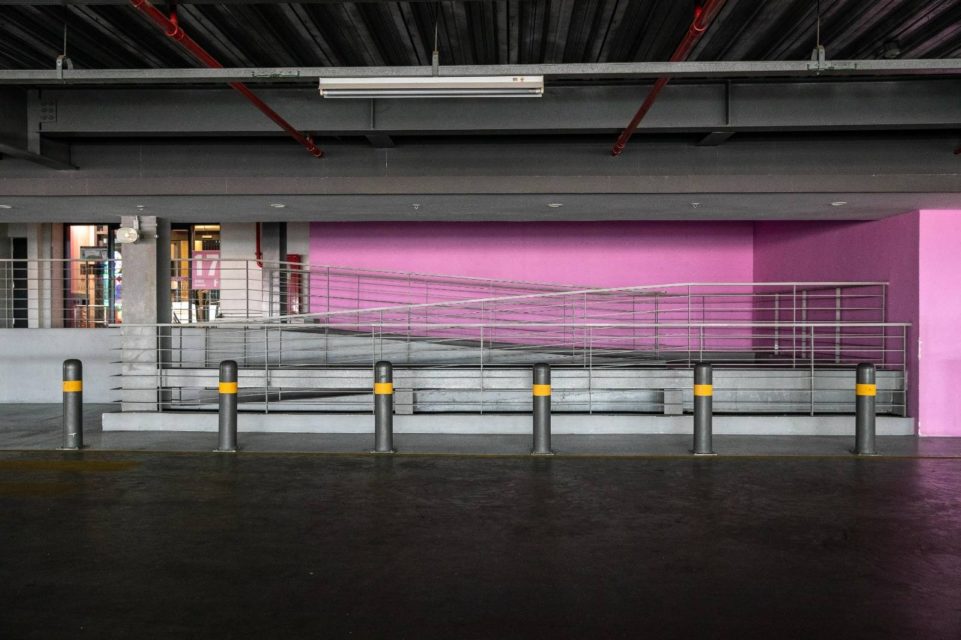
A Systematic Change
There must be a systematic change in how we prioritize designing for disability.
Government intervention to fund and introduce a disability design manual, informed by the Cambodia-specific knowledge of disability advocates, and designers, is imperative to ensure correct formulation and implementation across the board.
Nevertheless, beyond simply relying on government enforcement, designers, builders and developers must take it upon themselves to enhance their design process. Placing accessibility provisions in a higher priority and, more importantly, incorporating these provisions as early as possible in the design process.
Lastly, it is also the architect’s duty to highlight the indispensability of accessible spaces. We may take great pride in designing buildings that are celebrated in photos and awards, but the main aim of architecture is to design spaces that are inclusive for people — all people, regardless of their abilities.
Ses Aronsakda is a junior researcher at Future Forum. Educated as an architect, he conducts research on Phnom Penh’s urban planning with interests in all aspects of cities and urban design.
This commentary is part of the Social Cohesion Project. The project invites young Cambodian researchers to conceptualize and model social cohesion in Cambodia. It is produced in partnership between Future Forum and UNDP Cambodia.


